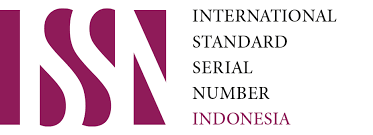EVALUATION OF INITIAL GAS VOLUME OF COALBED METHANE USING FOUR METHOD
Abstract
Coal bed methane (CBM) is an unconventional energy resources in which the main ingredient is methane gas formed in the process of formation of coal (coalification). Based on research Advance Resource International inc. (ARI), the CBM resource potential is 453 Tcf spread across 11 basins in Indonesia. CBM technology is expected to be one of the alternative energy can play a role in helping to suppress the natural gas needs of oil as one of the energy commodities di Indonesia.
This paper discusses about a calculated initial volume of gas in place (Gas in Place) on CBM reservoir “X” field. This initial gas volume calculation first calculating the gas content is becoming an important parameter in calculating the initial volume. This content gas value can be obtained through data analysis proximate such as ash content, moisture content, volatile matter, fixed carbon which such data can be obtained from laboratory results. But there is also the calculation of the gas content which can be obtained by simply using coal density data using several methods of calculation, such as the Mavor method, Bambang, Modified Kim, and Mullen method. In the “X” field there are five wells coalbed methane drilling has been done, namely, SS-1, SS-2, SS 3, SS-4 and SS-5 and there are five layers are seam-1, seam-2, seam-3, seam-4, and seam-5. Based on the calculations were also obtained in the “X” field coal rank, the average is sub-bitminous. Of the five wells will be calculated gas content and the initial volume of gas using a method Mavor, Bambang, Modified Kim, and Mullen.
Using four methods then the gas content in the SS well ranged between 200-500 SCF / ton. And assuming that the well drainage area (A) covering an area of 100 acres, the obtained large volumes of coal bed methane wells SS-1 with the four methods ranged from 3-9 BSCF, the SS-2 ranged between 1-3 BSCF, wells SS- 3 are 2-5 BSCF, the SS-4 range between 1-3 BSCF and the SS-5 ranges between 1-3 BSCF.
We will be compared the initial gas volume in the Field “X” using the four methods with data from the laboratory result. From that analysis it can be proved that the Bambang method is the most suitable method and represents CBM field in Indonesia. So the initial gas volume in Field “X” is using the result from Bambang method, and the result are 5312.17 MMscf on the SS-1well, 2385.77 MMscf on the SS-2 well, 3330.84 MMscf on the SS-3 well, 1635.44 MMscf on the SS-4 well, and 1608.74 MMscf on the SS-5 well. And the total initial gas volume in the “X” Field is 14273 MMSCF.
Full Text:
PDFReferences
Divisi ESDM, “Peluang Investasi Sektor ESDM”, Kementerian ESDM, Jakarta, 2010.
Halliburton,” Coal Bed Methane: Principles and Practices”,Texas, 2008.
Bambang, A.W.et.al., “Modifikasi Persamaan Proximate Log”, Lembaran Publikasi LEMIGAS, Jakarta, 2010
Hidayat.2012 “Evaluasi Gas Content Menggunakan Berbagai Macam Metode untuk Menentukan Isi Awal Gas di Tempat Pada Lapangan Coal Bed Methane “RESA” . Tugas Akhir, Jurusan Teknik Perminyakan Universitas Trisakti, Jakarta
Simorangkir, Tiffani A. 2014” Analisis Proximate, Analisis ultimate dan Analisis Miscellaneous Pada Batubara”. Tugas Akhir, Jurusan Teknik Pertambangan, ITM, Medan
Anpradino, Fallen F.2016 “Evaluasi Gas Content dengan menganalisis data laboratorium untuk menentukan isi awal gas pada reservoir cbm lapangan x” Tugas Akhir, Jurusan Teknik Perminyakan Universitas Trisakti, Jakarta
Unicorn in the garden of good and evil : Part 3 – Coal Bed Methane (CBM) By E.R.(Ross) Crain, P.Eng https://www.spec2000.net/freepubs/2010-3UnconvCBM.pdf [04 Nov 2016]
Digital Formation, Lesa, Coalbed Methane Log Analysis. Prepare by MichaelHolmes. http://www.creategeo.com/bgmanage/updown/2Upload%20Files%5CCBM.pdf [04 Nov 2016]
CBM reservoir http://petrowiki.org /CBM_reservoir_fundamentals
Nov 2016]
Coal Bed Methane http://www.cbmasia.ca/What-Is-CBM [04 Nov 2016]
DOI: http://dx.doi.org/10.33021/jmem.v3i1.535
Refbacks
- There are currently no refbacks.
This work is licensed under a
Creative Commons Attribution-NonCommercial 4.0 International License










